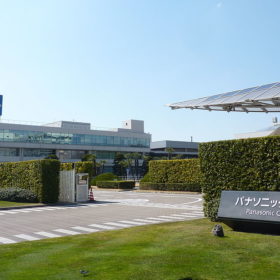
Electronics corporations Panasonic, Kyocera and LG have filed results for the nine months to December 31. All three reported uplifts because of their solar activity and LG has said it will dive deeper into energy storage. Panasonic is deepening its commitment to automotive batteries through a new joint venture with Toyota.
Electronics giant Panasonic and compatriot carmaker Toyota have launched the Prime Planet Energy & Solutions Inc joint venture (JV) announced 13 months ago. The JV will manufacture electric vehicle (EV) batteries based on a smaller prismatic format than cylindrical alternatives.
Panasonic batteries are already prominent in the automotive industry as the company works with EV manufacturer Tesla. It is unclear, however, whether Panasonic will continue with the NCA technology used for its Tesla batteries or whether a new product will be made for Toyota. The official launch of the new company, which will be 51% owned by the carmaker, is planned for April 1.
A statement made by the partner companies said Prime Planet will produce high capacity, high output prismatic lithium-ion batteries and solid-state devices. The JV will also manufacture “next-generation batteries based on new principles” to provide grid ancillary services and other applications.
While Panasonic’s overall nine-month sales figures to the end of December – released yesterday – were down 5% to ¥5.76 trillion ($52.8 billion), the Life Solutions segment of the group, which includes the Japanese conglomeration’s solar module manufacturing unit, recorded sales of ¥1.51 trillion for a 3% rise on the same period of last year.
That success came despite a 3% fall in the parent group’s gross profit and an 18% reverse in operating profit, to ¥1.16 trillion and ¥241 billion, respectively. The group’s automotive business also experienced another decline with last year’s operating loss of ¥9.2 billion widening to ¥29.2 billion in the latest figures.
LG’s record year
LG Electronics, which has also posted financial results, claimed a record-breaking sales year with revenues of KRW62.3 trillion ($5.25 billion) in 2019. The Korean tech giant attributed the high revenues to demand for premium home appliances.
The company’s solar modules business is reported under the LG Business Solution Company which turned over KRW2.67 trillion as the unit’s operating income came in at KRW247 billion. LG said strong demand for its solar panels and digital displays secured a “healthy” quarterly operating profit of KRW66.4 billion on the back of fourth-quarter revenues of KRW673 billion – 13% higher than in the same quarter of 2018.
LG Chem, which incorporates the group’s battery production business among other operations, also reported strong results as last year saw KRW28.6 trillion in sales and 896 billion in operating profits.
The company’s overall revenues increased 1.6% year-on-year although operating profit plunged 60% over the same period.
“We have achieved record high sales in the year through [the] continued growth of the Energy Solution Company despite the U.S.-China trade disputes and the global economic slowdown, although the impact of one-off costs related to ESS [energy storage systems] reduced the scale of the company-wide profit,” said LG Chem vice president and chief financial officer Cha Dong-seok. “Particularly in [the fourth quarter], operating profit turned to a loss due to one-off expenses, but there were also significant achievements such as the Petrochemicals Company maintaining solid profitability despite the off-season circumstances and deteriorating market conditions, as well as the Energy Solution Company’s performance that nearly reached the break-even point in electric vehicle batteries.”
Cha said LG Chem will significantly expand the Energy Solution Company under which the battery business falls. In the past financial year the business has experienced sustained growth in the segment due to EV battery demand.
Kyocera solar lift
The picture looks a little less rosy for Japanese rival Kyocera, where sales revenues in the nine months to December 31 fell ¥17.5 billion – or 1.4% – to ¥1.2 trillion.
Nevertheless Kyocera managed to raise profits, mainly because a one-time charge of ¥68.5 billion did not occur. The company said the absence of that bill was the result of structural reform in its solar energy and organic material businesses. Operating profit increased ¥34.3 billion – 56.6% – to ¥94.9 billion.
Kyocera’s solar energy business is reported under the Life & Environment Group which reported increased sales for the period. Rising demand at the solar business drove a ¥3.47 billion yen, 5.9% increase in sales revenue to ¥62 billion, up from ¥58.5 billion, year-on-year. That meant reduced losses in the Life & Environment unit of ¥7.34 billion, a red figure ¥56.6 lower than that posted a year earlier.
With the solar business more profitable, the figures for the unit were also helped by the omission of a ¥52 billion settlement cost related to long-term polysilicon purchase agreements.
Lắp đặt điện mặt trời Khải Minh Tech
https://ift.tt/2X7bF6x
0906633505
info.khaiminhtech@gmail.com
80/39 Trần Quang Diệu, Phường 14, Quận 3
Lắp đặt điện mặt trời Khải Minh Tech
https://ift.tt/2ZH4TRU
Không có nhận xét nào:
Đăng nhận xét